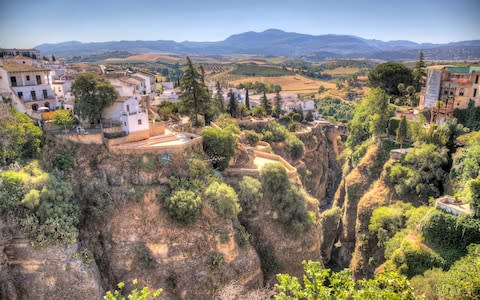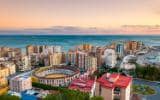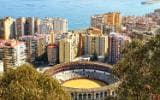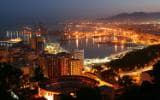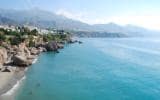The best things to see and do in Malaga, from Moorish architecture to Picasso
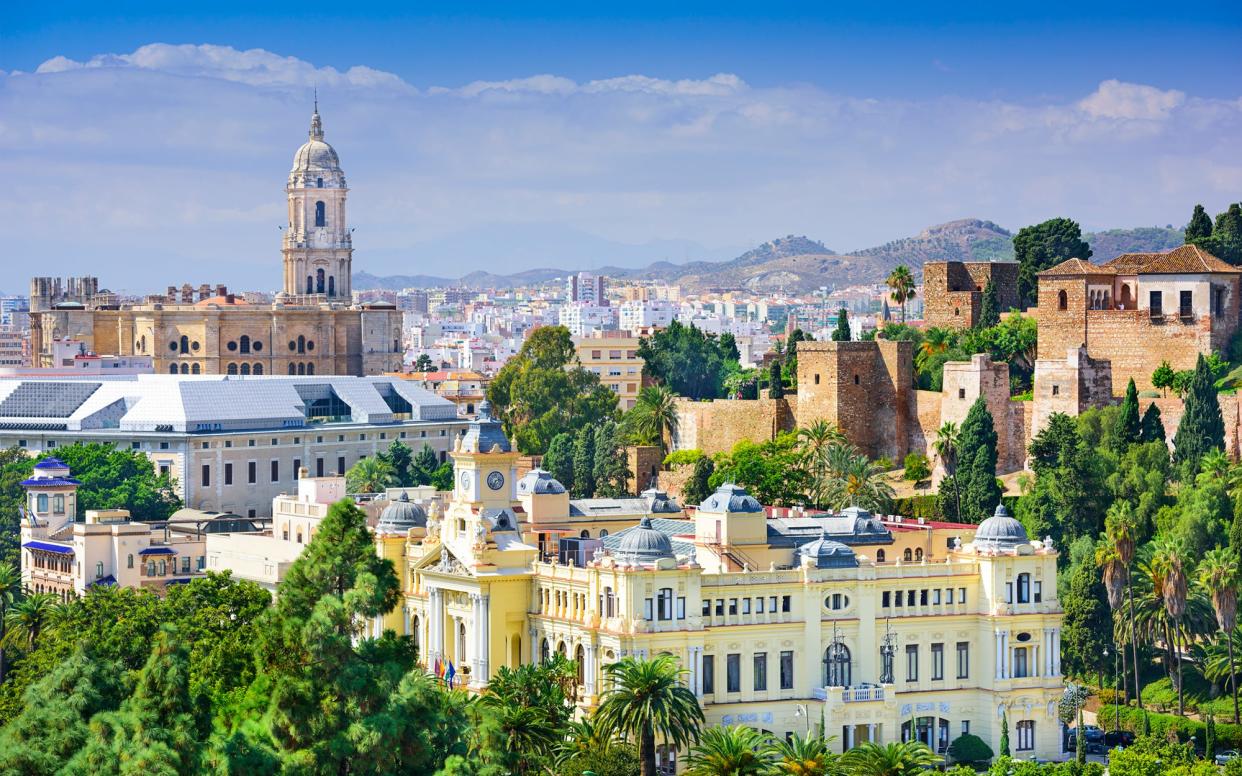
Expert guide to Malaga
- Overview
Overview
- Hotels
Hotels
- Attractions
Attractions
- Restaurants
Restaurants
- Nightlife
Nightlife
- Itineraries
Itineraries
There’s plenty in Malaga to keep culture vultures happy for a couple of days. Right in the centre, you come across Phoenician and Roman remains, vestiges of the city’s Moorish heritage, opulent Baroque churches and stunning contemporary architecture. And the city’s clutch of art galleries and museums seems to be ever-growing as Malaga increasingly positions itself as one of Spain’s cultural hotspots.
City Centre
See some of Picasso's earliest work
Museo Picasso Málaga charts the career of Malaga’s most famous son, with work dating from the late-19th century until his death in 1973. Situated in the Palacio de Buenavista, the museum is a few minutes away from the house where Picasso was born on Plaza de la Merced (also a museum). At least three temporary exhibitions, featuring work from Picasso’s contemporaries, are usually running, and there’s a good shop and café.
Insider’s tip: Given the museum’s popularity it’s definitely worth buying tickets online before you visit. Plus, advance tickets mean you can zip through security without joining the inevitable queue.
Contact: 00 34 952 12 76 00; museopicassomalaga.org
Opening times: Daily, 10am-7pm (March-June), 10am-8pm (March-June), 10am-7pm (Sept-Oct), 10am–6pm (Nov-Feb)
Price: ££; free on Sundays in last two hours of opening
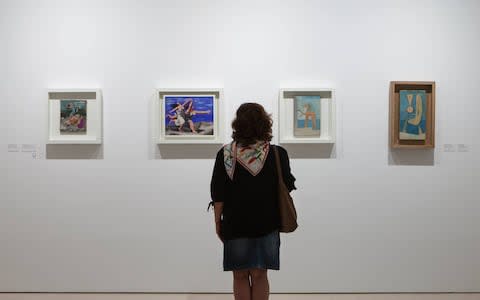
? The best restaurants in Malaga
Take a guided tour of the cathedral’s domed rooftops
The cathedral’s construction began in the 16th century, on the site of Malaga’s main mosque. However, one of the towers was never completed, resulting in its rather lop-sided appearance, meanwhile the merge of Gothic, Renaissance and Baroque elements reflect the long period of construction. Inside, highlights include the carved choir stalls, two 18th-century organs, a sculpture by Pedro de Mena and a painting by Alonso Cano.
Insider’s tip: Take a guided tour of the cathedral’s domed rooftops – a two-hundred step ascent that’s rewarded by sweeping city-centre views. Tickets can be bought from the Palacio Episcopal, with times varying throughout the year.
Address: Calle Molina Lario, 9
Contact: 00 34 952 22 03 45
Opening times: Mon–Fri, 10am-6pm; Sat, 10am-5pm
Price: ££
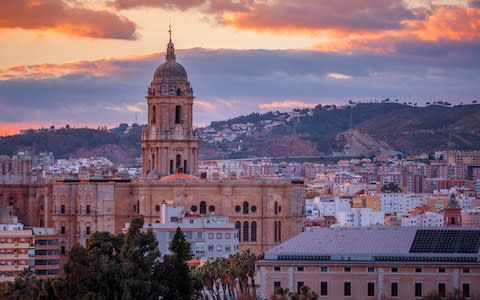
? The best nightlife in Malaga
Visit the largest museum in Andalucía
Malaga finally has a home for its vast archeological and fine art collection – and after an expensive refurbishment of the 18th-century customs building, it’s quite the home indeed. This giant of a museum, the largest in Andalucía, boasts two thousand archeology pieces – Moorish ceramics, Roman marble figures, a sixth-century BC Corinthian mask – and an array of fine art works centered around Malaga’s best artists.
Insider’s tip:It’s not just the exhibitions that require your attention: glance up at the roof where 6,000 tiles are decorated with engravings of Malaga, and don’t miss the courtyard with its sky-high palm trees.
Contact: 00 34 951 911 904; museosdeandalucia.es
Opening times: Tues-Sun, 9am-3pm (mid-June to mid-Sept); Tues-Sat, 9am–8pm (mid-Sept to mid-June); Sun, 9am–3pm
Price: £
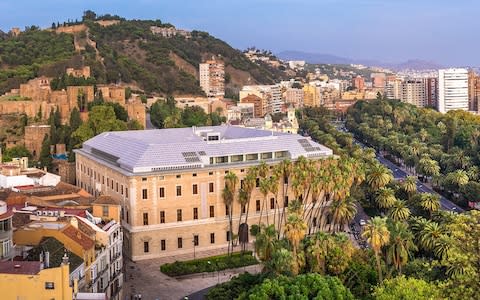
See some Moorish history
Perched on Mount Gibralfaro – strategically overlooking both the city and sea – stands the Alcazaba. The wonderfully preserved site is a magnificent hallmark of the region’s Moorish past. Although Roman in origin (look for the recycled Classic columns), the Alcazaba was built in the 11th century by Malaga’s Moorish rulers who used it as a fortress and palace. There’s also an archaeological museum exhibiting Roman mosaics and Moorish ceramics.
Insider’s tip: If the steep uphill climb from town is too much then take the lift up from the street level entrance on Calle Guillen Sotelo, located directly behind the Ayuntamiento.
Address: Plaza de la Aduana, Alcazabilla 2
Contact: 00 34 630 93 29 87
Opening times: Daily, 9am–8pm (April-Oct); 9am-6pm (Nov-March)
Price: £; free Sundays after 2pm

Discover a Roman ampitheatre
Standing in the Alcazaba’s shadow, on Mount Gibralfaro, is a Roman amphitheatre. Dating back to 1BC, the Teatro Romano was discovered by chance during building works in 1951. The site is accessed through a Centro de Interpretación, whose exterior is embellished with extracts from the Roman city’s municipal law code. Parts of the original tiered seating, the stage and access corridors have survived to this day.
Insider’s tip: As well as being an attraction in itself, today the amphitheatre doubles up as an atmospheric outdoor venue for a variety of theatre productions and concerts (ask the tourist office for details).
Address: Calle Alcazabilla 8
Contact: 00 34 951 50 11 15
Opening times: Tues-Sat, 10am-6pm; Sun, 10am-4pm
Price: free

? The best restaurants in Malaga
See some 19th-century Andalucían art
Occupying the 16th-century Palacio de Villalón, the Carmen Thyssen Málaga Museum displays the collections of the widow of the late Baron Hans Heinrich Thyssen-Bornemisza. Most of the works on display are from the 19th century and there’s a strong emphasis on Andalucían art – artists include Zurbarán, Sorolla and Romero de Torres. The fourth floor houses temporary exhibitions, which have featured big names such as Matisse, Monet and Van Gogh. There’s a good on-site café and shop.
Insider’s tip: The museum also runs an exciting programme of events that range from poetry recitals and jazz concerts to a number of active learning sessions.
Contact: 00 34 902 30 31 31; carmenthyssenmalaga.org
Opening times: Tues-Sun, 10am-8pm. Guided tours of the permanent collection on Tuesdays, Fridays and Saturdays at 1pm, and of the temporary exhibitions at 6.30pm on Fridays
Price: ££; free Sundays after 5pm
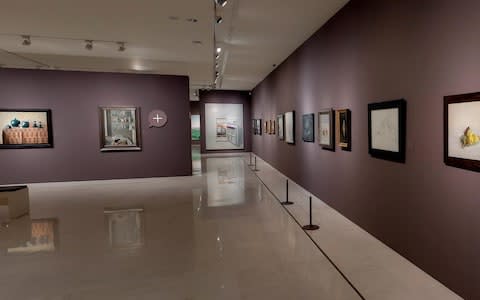
Head to the heart of Malaga's food scene
The heart of Malaga’s food scene, the city’s Mercado Central (main market) should not be missed. The striking, 19th-century, wrought-iron building is filled with stalls laden with vegetables, legs of jamón and glistening, plump fish. It’s a great spot for lunch; grab a chair at one the stalls for some tapas or have fresh fish grilled to order.
Insider’s tip: Most people miss the market’s little-known architectural gem – the southern fa?ade’s 14th-century Moorish arch. Once the gateway between the city and port, it was built for Yusuf I of Granada, who commissioned Andalucía’s other great gateway, the Alhambra’s Puerta de la Justicia.
Address: Calle Atarazanas
Opening times: Mon-Sat, 9am-3pm
Price: free
![Mercado Central - Credit: Ivo de Rooij (Ivo de Rooij (Photographer) - [None]/ivotheeditors](https://s.yimg.com/ny/api/res/1.2/PT8WeUvLiQdztYBxOZmf0g--/YXBwaWQ9aGlnaGxhbmRlcjt3PTk2MDtoPTYwMA--/https://media.zenfs.com/en-GB/homerun/the_telegraph_258/97a2755ead69208384f6097fcbac3fb6)
? The best restaurants in Malaga
Unwind in the thermal pools
Hammams were first brought to Andalucía in the eighth century and visiting one is the most enjoyable way to immerse yourself in Malaga’s history. Decorated with intricately carved archways and tiled walls, the Hammam Al Andalus makes for a stunning place to unwind. In the candle-lit semi-darkness, alternate between hot and cold thermal pools, sip sweet mint tea and kickback with a massage.
Insider’s tip: Visits to the Hammam Al Andalus must be booked in advance – opt for an evening session when the lantern-lit interior is at its most atmospheric. The perfect way to wind down after a busy day.
Contact: 00 34 952 215 018; malaga.hammamalandalus.com
Opening times: Daily, 9.30am–midnight
Price: ££
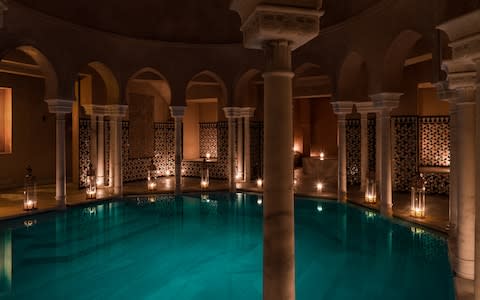
? The best nightlife in Malaga
La Malagueta
Check out modern art at a Parisian transplant
Situated on Malaga’s sleek Muelle Uno, the city’s attention-grabbing Pompidou Centre is topped with a striking multicoloured glass cube. Housing a fantastic array of modern art works on loan from the Paris HQ, the collection features big-name artists such as Bacon, Kahlo, Chagall and – Malaga’s own homeboy – Picasso. As well as the permanent collection, the gallery also showcases a number of temporary exhibitions.
Insider’s tip:The Pompidou runs a programme of concerts, films and dance performances. Families should check out the workshops, which feature dance, film and spoken word and are aimed at ages six to 12.
Contact: 00 34 951 92 62 00; centrepompidou-malaga.eu
Opening times: Mon and Wed-Sun, 9.30am-8pm
Price: ££; free Sundays after 4pm

Soho
See modern Spanish art in a cool neighbourhood
Housed in a converted market, Malaga’s contemporary art museum has gained a reputation internationally for the quality of its exhibitions. Focusing on works from the 20th and 21st centuries, Spanish artists in the collection include Miquel Barceló, José María Sicilia and Juan Mu?oz, while international names include Louise Bourgeois, Frank Stella and Tony Cragg. There are usually at least two temporary exhibitions, plus there’s a shop, restaurant and café.
Insider’s tip: Street art fans will love the graffiti-splashed streets of the surrounding Soho district. To get more out of the experience, the CAC runs free street art tours on Mondays.
Contact: 00 34 952 12 00 55; cacmalaga.eu
Opening times: Tues-Sun, 10am-8pm. Summer opening (end of June to second week of Sept), 10am-2pm and 5pm-9pm
Price: free

Outside of the city centre
View Russian artworks
Housed in a restored tobacco factory, this excellent museum showcases a collection of Russian artworks on loan from St Petersburg’s Russian State Museum. The theme of the main collection changes annually, while twice a year the museum runs smaller exhibitions highlighting the work of a specific Russian artist or focusing on a particular cultural or historical theme.
Insider’s tip: Throughout the year the museum also runs a rich cultural programme to enhance its collection, with everything from film screenings and conferences, to concerts by some of Russia’s top musicians. See the website for more details.
Contact: 00 34 951 92 61 50; coleccionmuseoruso.es
Opening times: Tues-Sun, 9.30am-8pm
Price: ££

? The best restaurants in Malaga
Enjoy the views (and history) of a castle
Rising above the Alcazaba, and a steep but rewarding walk up from it, is the Gibralfaro Castle. Another one of Malaga’s remarkably preserved Moorish sites, the castle was built in the 14th century and last played an active role in 1936 during the Spanish Civil War. Inside the castle there’s an exhibition area charting the Gibralfaro’s history.
Insider’s tip: While you are up here, don’t miss the views down over the city. While the vistas can be enjoyed from the ramparts or Gibralfaro’s bar, an even better spot is the terrace of the nearby Parador de Málaga-Gibralfaro.
Address:Camino Gibralfaro 11
Contact: 00 34 952 22 72 30
Opening times: Daily, 9am–8pm (April-Oct); Daily, 9am–6pm (Nov-March)
Price: £; free entry Sundays after 2pm
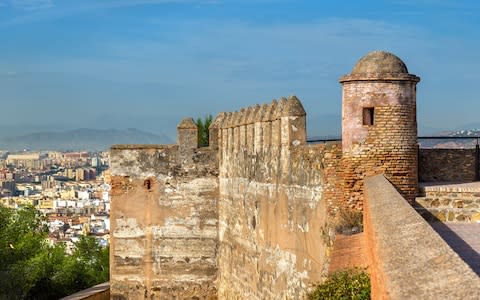
? The best nightlife in Malaga
Have a picnic in one of Europe's best botanical gardens
Rated as one of the best botanical gardens in Europe, La Concepción combines formal gardens with a tropical paradise of swaying palm trees, soaring bamboo and other exotic plants. Created in the mid-19th century by an aristocratic couple, Jorge Loring Oyarzábal and his wife Amalia Heredia Livermore, the gardens fell into decline but have been restored to their former glory by Malaga City Council.
Insider’s tip: Take a picnic along. Head to La Mallorquina (Plaza de Félix Sáenz 7; 00 34 952 21 33 52) beforehand for crumbling malague?o cheese, slithers of jamón and fat olives.
Contact: 00 34 951 92 61 80; laconcepcion.malaga.eu
Opening times: Tues-Sun, 9.30am-7.30pm (April–Sept); Tues-Sun, 9.30am-4.30pm (Oct-March). Visitors may remain in the garden for up to an hour and a half after closing time.
Price: £; free from April-Sept on Sundays after 3.30pm and from Oct-March all day Sunday

? The best nightlife in Malaga
Stroll through the gardens of an English cemetery
St George’s Cemetery, to give it its proper name, was built in the 19th century to provide a burial place for foreigners who died in Malaga. Before the cemetery was built the Spanish authorities denied Christian burial to all “infidels” who died in Spain – a group that included British Protestants. So this English Cemetery, built in 1830, marked the first Protestant cemetery in Spain.
Insider’s tip: Strolling through the Romantic-style gardens and looking at the names on the tombs is an evocative way to learn about Malaga’s links with Great Britain. For further insight, the shop can provide a map.
Contact: 00 34 952 22 35 52; cementerioinglesmalaga.org
Opening times: Mon-Fri, 9am-3pm, Sat-Sun, 10.30am-3pm
Price: £
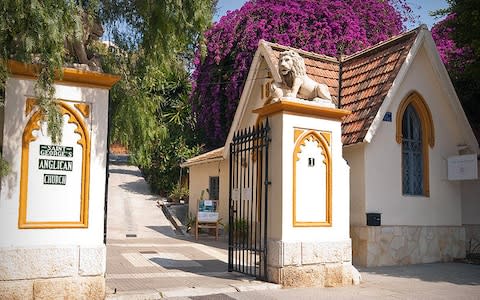
Learn about the history of cars
The dynamic Automobile Museum is located in the spectacular setting of an old tobacco factory. With almost 100 vehicles on display, the museum charts the history of cars from the end of the 19th century to the present day. The collection features first models such as a 1912 Barron Acoryd, as well as signature designs – with an impressive array of Roll-Royces somewhat stealing the show.
Insider’s tip: Cars aren’t the whole story here – there’s fashion on display too. The exhibitions follow the evolution of haute couture through the 20th century with a collection of clothes and hundreds of vintage hats and handbags.
Contact: 00 34 951 13 70 01; museoautomovilmalaga.com
Opening times: Daily, 10am–7pm
Admission: ££

? The best restaurants in Malaga
Toast the region's wine
Malaga has a wine culture that dates back thousands of years and it’s about time the wines produced in the region got the recognition they deserve. And that’s precisely where the Museo del Vino Malaga comes in. Set in the fantastically restored Palace of Biedmas, a Baroque 18th-century townhouse, the museum proudly champions the quality and culture of the region’s wine.
Insider’s tip: As with any good wine museum, this place also offers tastings and wine courses – as well as a full-bodied programme of cultural events that range from jazz concerts to theatre productions.
Contact: 00 34 952 22 79 90; museovinomalaga.com
Opening times: Mon-Fri, 10am-5pm; Sat, 10am-2pm
Price: ££
Visit nearby beaches and fishing villages
A trip to Malaga wouldn’t be complete without swapping the concrete for a swathe of golden sand. About 10 minutes’ walk from the Old Town is Playa de la Malagueta, a long swerve of palm-tree-dotted sand. Further off, lie the fishing villages of El Palo and Pedragalejo, which are home to some of the province’s best seafood restaurants.
Insider’s tip: Cycle to the beach; head to the Recyclo Bike Café (Plaza Enrique García Herrera, 16; 00 34 951 353 716) and combine breakfast with renting some wheels from their bike shop; prices start at €7 (£6) for a half day.

Day trips
Explore one of the world’s best examples of Islamic architecture in Granada
Set on seven hills below the Sierra Nevada, Granada is nothing if not dramatic. Seventy-five miles north-east of Malaga, the city is dominated by the vast Alhambra complex, where the stunning palaces, fortress and gardens form one of the world’s best examples of Islamic architecture.
Insider's tip: Be sure to buy tickets well in advance via tickets.alhambra-patronato.es; general admission costs €14 (£13) and includes a 30-minute slot for the star attraction of Palacios Nazaríes. ALSA (00 34 902 42 22 42) operates a frequent bus service from Malaga to Granada. The fastest bus takes one hour and a half and a return costs around €27 (£24).

Take the train to Antequera
Twenty-eight miles north of Malaga, Antequera has an astonishingly rich heritage, including some of the most important Neolithic dolmens in Europe, Roman sculpture and a cluster of Renaissance and Baroque churches. Today it’s also a lively provincial town with plenty of cafés and shops. See turismo.antequera.es or telephone 00 34 952 70 25 05 for more.
Insider's tip: If you are travelling independently, Antequera is easy to reach by high-speed train (renfe.com). Be sure to get the Avant service, which costs around €18 (£16) return, rather than the Ave, which costs more than twice as much and takes the same time (25 minutes).

? The best restaurants in Malaga
Visit Ronda, the most striking of Andalucía’s white towns
Spectacularly sited astride a dramatic chasm, Ronda (located 41 miles from Malaga) is arguably the most striking of Andalucía’s famous white towns. Fringed by mountains, Ronda radiates out from an old town centre of clustered white-washed buildings, linked together by an 18th-century arched bridge, which stretches across the vast drop of the El Tajo gorge. The town is also home to one of Spain’s oldest bullrings.
Insider's tip: Two trains run between Malaga and Ronda each day, with the journey taking around two hours each way and costing about €25 (£22) return. Tickets can be bought in advance at renfe.com.
